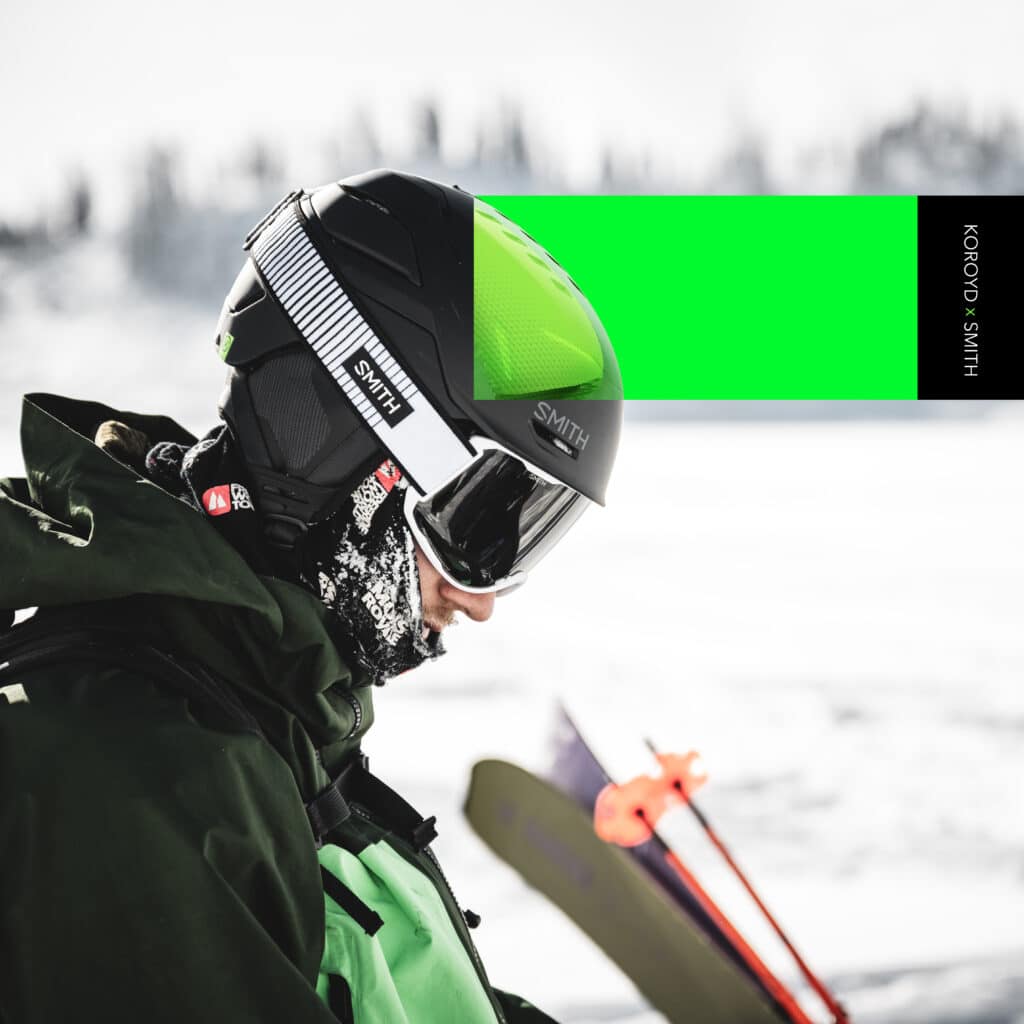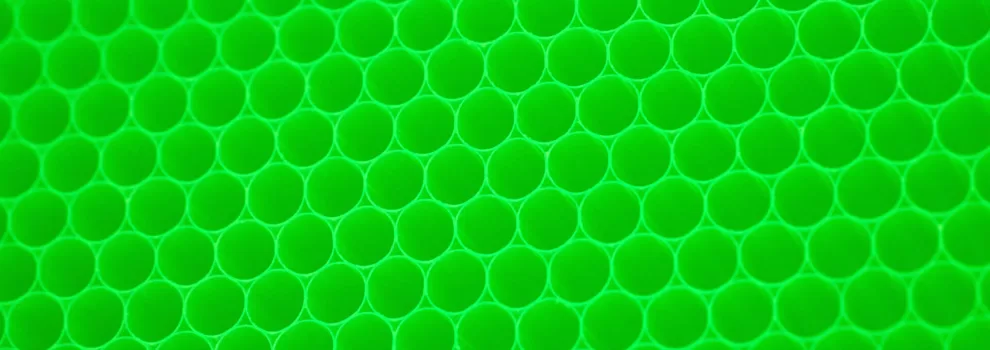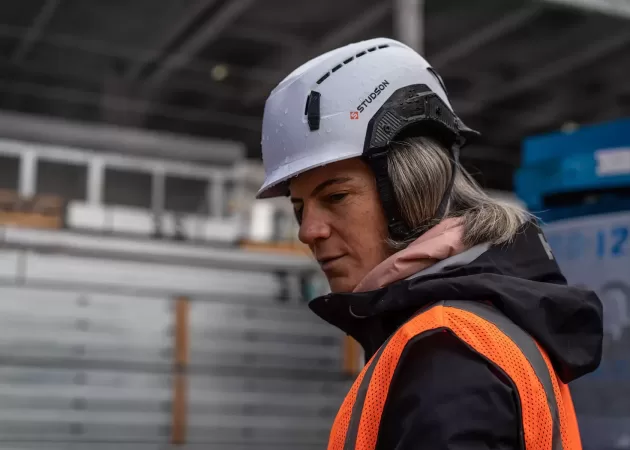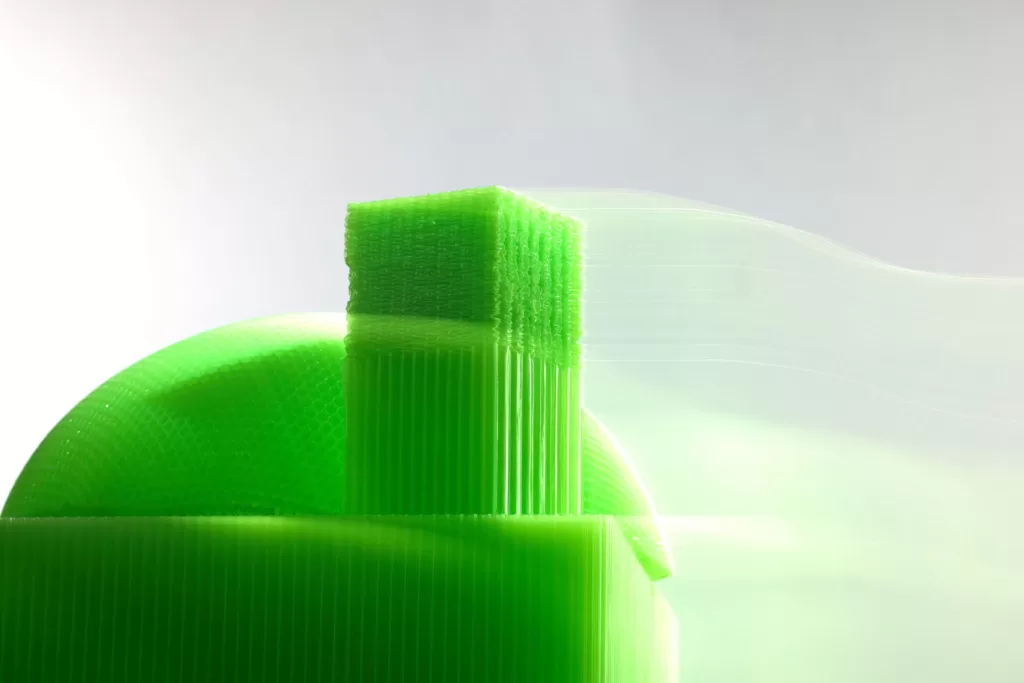

Koroyd provides advanced breathability and ultralight feel, but first and foremost, better protection which may reduce the risk of suffering a life-affecting injury.




Koroyd’s welded tubes crumple instantly and consistently on impact, absorbing maximum force in a controlled manner, minimizing energy transferred to your head. Traditional energy absorbers act like a spring, storing the energy from an impact and releasing it over a micro-moment of time. Due to this, more energy could be transferred to the head, increasing the risk of injury.
When Koroyd is impacted, energy is better absorbed through sacrificial plastic deformation. The material acts as a true energy absorber rather than a spring, crumpling, absorbing, and protecting the wearer.


Koroyd’s unique behavior helps to protect your skull and brain from direct and angled impacts which may reduce the risk of suffering a life-changing injury. Studies prove, in the event of an angled impact, when direct acceleration is reduced by absorbing energy, there is a 91% correlation with a reduction in the rotational motion of your head and brain. In simple terms, if your helmet absorbs more energy, you are better protected from any angle of impact.


Air flows consistently through Koroyd’s open cells, meaning hot air from your head can easily escape, ensuring more efficient cooling in the most intense conditions. In contrast, traditional impact protection foams like expanded polystyrene (EPS) are rigid and tough, originally used to package food and insulate buildings. For helmets featuring Koroyd, the consistent tubular structure allows for maximum ventilation across the entire surface of the core – without compromising on safety.


Koroyd features the world’s thinnest walled tubes, resulting in a structure which is 95% air. This reduces weight and enhances comfort without compromising on safety. Traditionally when removing material to reduce weight, helmet manufacturers have to compromise on safety because less material thickness can mean less protection. With Koroyd, that’s not the case. Because the welded tube structure is ultralight and strong and has better energy-absorbing properties, we can reduce weight while improving impact protection.


Koroyd’s welded tubes crumple instantly and consistently on impact, absorbing maximum force in a controlled manner, minimizing energy transferred to your head. Traditional energy absorbers act like a spring, storing the energy from an impact and releasing it over a micro-moment of time. Due to this, more energy could be transferred to the head, increasing the risk of injury.
When Koroyd is impacted, energy is better absorbed through sacrificial plastic deformation. The material acts as a true energy absorber rather than a spring, crumpling, absorbing, and protecting the wearer.


Koroyd’s unique behavior helps to protect your skull and brain from direct and angled impacts which may reduce the risk of suffering a life-changing injury. Studies prove, in the event of an angled impact, when direct acceleration is reduced by absorbing energy, there is a 91% correlation with a reduction in the rotational motion of your head and brain. In simple terms, if your helmet absorbs more energy, you are better protected from any angle of impact.


Air flows consistently through Koroyd’s open cells, meaning hot air from your head can easily escape, ensuring more efficient cooling in the most intense conditions. In contrast, traditional impact protection foams like expanded polystyrene (EPS) are rigid and tough, originally used to package food and insulate buildings. For helmets featuring Koroyd, the consistent tubular structure allows for maximum ventilation across the entire surface of the core – without compromising on safety.


Koroyd features the world’s thinnest walled tubes, resulting in a structure which is 95% air. This reduces weight and enhances comfort without compromising on safety. Traditionally when removing material to reduce weight, helmet manufacturers have to compromise on safety because less material thickness can mean less protection. With Koroyd, that’s not the case. Because the welded tube structure is ultralight and strong and has better energy-absorbing properties, we can reduce weight while improving impact protection.


Engineered in a lab, but built for real life. For people on the move who need protection as advanced as they are. Like the people it’s for, Koroyd is never passive, crumpling, absorbing, and protecting against the impact of living an active life.
Compressive strength is the resistance of a material to breaking under compression – in Koroyd’s case, crumpling to absorb energy and protect the wearer. Koroyd’s high-performance tubular core is available in various tube diameters, densities, and polymers which allows our engineers to tailor a solution for particular performance requirements. Due to this flexibility, Koroyd’s compressive strength can be adapted depending on the amount of force that users could encounter in an accident.


With Koroyd, energy from an impact is converted through plastic deformation, using up to 80% of the material’s thickness for maximum energy absorption. Because of this large compression volume, the structure can endure multiple impacts within one accident and still have material left to absorb energy. This is unique behavior compared to traditional materials that stiffen during compression and solidify when up to 60% of the material is compressed, therefore reducing the thickness of the liner that can be utilized to absorb energy in an impact. Koroyd is more efficient at absorbing energy and protecting the wearer.
High volumetric energy absorption is what gives Koroyd a distinct performance advantage as a consistent, reliable energy absorber. Koroyd has an immediate loading curve, meaning a large amount of energy is absorbed from the moment of impact. On a graph, Koroyd’s stress plateau is straight compared to the EPS foam stress plateau which constantly increases.
As Koroyd is a welded tube structure, when compressed, the tubes crush starting from one end. As the compression continues, the structure’s resistance to compression remains constant, allowing for efficient absorption of energy up until densification.


Koroyd was developed from aerospace safety research in 2010 and has been integrated into better-performing products for over a decade. In contrast, EPS foam, a traditional choice for helmet impact absorption, was accidentally discovered in 1839 and used to package food since the 1970s. Helmet manufacturers use this material because it’s cheap, relatively light, durable, and can absorb energy in the event of an impact. Koroyd is lighter, more breathable and absorbs more energy – distinct performance advantages without compromising one for another.
Compressive strength is the resistance of a material to breaking under compression – in Koroyd’s case, crumpling to absorb energy and protect the wearer. Koroyd’s high-performance tubular core is available in various tube diameters, densities, and polymers which allows our engineers to tailor a solution for particular performance requirements. Due to this flexibility, Koroyd’s compressive strength can be adapted depending on the amount of force that users could encounter in an accident.


With Koroyd, energy from an impact is converted through plastic deformation, using up to 80% of the material’s thickness for maximum energy absorption. Because of this large compression volume, the structure can endure multiple impacts within one accident and still have material left to absorb energy. This is unique behavior compared to traditional materials that stiffen during compression and solidify when up to 60% of the material is compressed, therefore reducing the thickness of the liner that can be utilized to absorb energy in an impact. Koroyd is more efficient at absorbing energy and protecting the wearer.
High volumetric energy absorption is what gives Koroyd a distinct performance advantage as a consistent, reliable energy absorber. Koroyd has an immediate loading curve, meaning a large amount of energy is absorbed from the moment of impact. On a graph, Koroyd’s stress plateau is straight compared to the EPS foam stress plateau which constantly increases.
As Koroyd is a welded tube structure, when compressed, the tubes crush starting from one end. As the compression continues, the structure’s resistance to compression remains constant, allowing for efficient absorption of energy up until densification.


Koroyd was developed from aerospace safety research in 2010 and has been integrated into better-performing products for over a decade. In contrast, EPS foam, a traditional choice for helmet impact absorption, was accidentally discovered in 1839 and used to package food since the 1970s. Helmet manufacturers use this material because it’s cheap, relatively light, durable, and can absorb energy in the event of an impact. Koroyd is lighter, more breathable and absorbs more energy – distinct performance advantages without compromising one for another.
Koroyd is a welded tube structure which is integrated into various products from action sports helmets, to skis, industrial worker’s protection and in-vehicle child seats. Koroyd’s primary purpose is to absorb energy when impacted and to protect the wearer from serious injury.
As well as being an industry leading energy absorber, Koroyd is also extremely breathable and ultra lightweight.
Koroyd’s welded tubes crumple instantly and consistently on impact, absorbing maximum force in a controlled manner, minimising energy transferred to your head. This unique behaviour helps to protect your skull and brain from direct and angled impacts which may reduce the risk of suffering a life-changing injury.
Koroyd’s welded tubes crumple instantly and consistently on impact, absorbing maximum force in a controlled manner, minimising energy transferred to your head.
This helps decelerate your head and reduces the amount of impact energy which could be transferred to your skull and brain.
Basic physics – by absorbing the maximum amount of force from all impact types, Koroyd is also able to reduce the rotating motion which your brain could endure as a result of an angled impact.
Studies prove, in the event of an angled impact, when direct acceleration is reduced (by absorbing energy), there is a 91% correlation* with a reduction in the rotational motion of your head and brain. In simple terms, if your helmet absorbs more energy, you are better protected from any angle of impact.
*For more information refer to independent study: 2001 COST 3277.
Yes. Air flows consistently through the open-cells, whilst hot air from your head can easily escape, ensuring more efficient cooling in the most intense conditions.
Yes. Koroyd features the world’s thinnest walled tubes, resulting in a structure which is 95% air. This reduces weight and enhances comfort without compromising on safety.
Expanded polystyrene (EPS) is a rigid and tough, closed-cell foam made of pre-expanded polystyrene beads. It densifies when impacted which can result in energy being transferred on to the user.
Koroyd is lighter, more breathable and offers much better protection – distinct performance advantages without compromising one for another.
When impacted, you may not be able to see the deformation of the material as the damaged area could be hidden inside the product.
If you have had a serious accident and impact, we do not recommend using the product again.
If the Koroyd core has been impacted, we cannot guarantee it will be as effective in an accident.
However, Koroyd can absorb up to 78% of the material’s thickness with consistent performance.
If in doubt, please take the product to your retailer so they can assess if there is any damage.
The distortion of the tubes does not affect the energy absorption performance of your product – this is merely cosmetic. At 0.06mm thick, the walls of Koroyd’s tubes are the thinnest extruded polymer tubes in the world and whilst this offers advanced energy absorption characteristics, minor distortion to the tubes can occur during installation inside helmets. Therefore, a certain level of distortion is expected and acceptable.
Koroyd has been tested to measure the potential for lacerations, cuts and punctures to human skin arising from the use of Koroyd integrated helmets in simulated bicycle accidents. Following the results, it can be confidently claimed that under EN1078 testing, Koroyd does not puncture, cut, tear, or lacerate human skin.
However, real-life impacts are more complex and varied both in terms of the accident scenarios and biological differences in helmet users. After a significant impact where Koroyd’s cells crumple to reduce the risk of a life-changing injury, there could be some cuts and bruises to the head, as is the case with any helmet, featuring Koroyd or not. Please note that most helmets featuring Koroyd also contain comfort liners and padding between the helmet components and your head.
Finally, for some reassurance – helmets featuring Koroyd have been on the market for 10+ years with millions of units sold to date via multiple reputable partner brands.
Koroyd does not absorb water and is therefore not affected when wet.
Koroyd’s performance is consistent between temperatures of -20°C to +50°C.
We recommend that any helmet featuring Koroyd is replaced every five years as there are many components in the helmet which have a lower life expectancy than Koroyd.
No. Koroyd is a welded tube structure. The cells are circular, not hexagonal.
Koroyd is made up of tens of thousands of co-polymer extruded tubes which are thermally welded together.
No. Koroyd is made from virgin materials because only this can provide the purity needed for maximum and consistent impact protection. Every time plastic is recycled, it loses some material strength which means its performance can be affected by the process.
Yes. Koroyd is 100% recyclable. Please ensure you separate other materials before recycling.